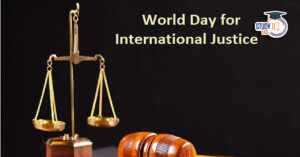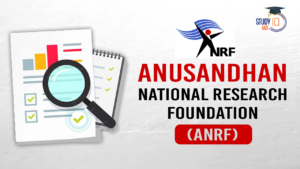Table of Contents
Registered Unrecognised Political Parties (RUPPs)
Context: The Election Commission of India Introduced new rules for the allocation of symbols to Registered Unrecognised Political Parties (RUPPs).
What Are The New Rules?
- New Rules for Symbol Allocation:
- Political parties are required to submit audited accounts for the last three financial years.
- They must provide expenditure statements from the last two elections.
- The signature of an authorised office-bearer of the party is mandatory.
- Eligibility: Registered Unrecognised Political Parties can qualify for the ‘concession of common symbol allotment’ upon fulfilling these criteria.
- Symbol Allotment Process: The allotment of symbols is governed by the Election Symbols (Reservation & Allotment) Order, 1968.
- Effective Date of the Rules: These new rules will be implemented starting January 11, 2024.
We’re now on WhatsApp. Click to Join
What Are Registered Unrecognised Political Parties (RUPPs)?
- Criteria:
- These parties are either recently registered.
- They haven’t garnered sufficient votes in assembly or general elections to qualify as a state party.
- They have not participated in any elections since their registration.
- Common Symbol Allotment: RUPPs are eligible for common symbols if they commit to put up at least 5% of the total candidates in the relevant Legislative Assembly election of a State.
- Application Process for Symbol Allotment: RUPPs must submit applications for symbol allotment in a prescribed format.
- These applications are governed by Para 10B of the Election Symbols (Reservation & Allotment) Order, 1968, and are received by the Election Commission.
| Political Party Registration
● Article 324 of the Indian Constitution empowers the Election Commission of India (ECI) with the authority to register political parties. ● The process for registering political parties is outlined under Section 29A of the Representation of the People Act, 1951. ● Parties seeking registration are required to submit an application to the Secretary of the ECI. ● This application must be filed within 30 days following the party’s formation. Recent Developments Related To RUPPs ● Transparency Measures by the Election Commission (2014): ○ RUPPs seeking a common symbol must provide current contribution reports. ○ They are required to submit audited annual financial accounts. ○ Updated election expenditure statements need to be filed. ○ The latest organisational details of the party must be furnished. ● Only 30% of RUPPs participated in the 2019 Lok Sabha election. ● ECI’s Actions in 2022: ○ The Election Commission of India (ECI) removed 86 RUPPs from its list, categorising them as non-existent. ○ Additionally, 253 RUPPs were classified as ‘Inactive RUPPs’ by the ECI. |
First Inland Waterways Development Council Meeting
Context: The Inland Waterways Authority of India (IWAI) is set to organise the first ‘Inland Waterways Development Council’ meeting in Kolkata for the development of river cruise tourism in India..
About Inland Waterways Development Council
- Establishment: The Inland Waterways Development Council was formed in October 2023 by the Government of India.
- Primary Objectives:
- The council’s main aim is to develop inland waterways comprehensively.
- It focuses on enhancing the Inland Water Transport (IWT) ecosystem.
- Key areas of development include cargo efficiency, passenger mobility, and river cruise tourism.
- The council involves active collaboration with States and Union Territories.
- Initiatives Launched: The Inland Waterways Development Council introduced the ‘Harit Nauka’ guidelines and the ‘River Cruise Tourism Roadmap, 2047‘.
- Goals of the River Cruise Tourism Roadmap:
- The roadmap aims to develop capacity in 26 additional waterways.
- It plans to increase the number of cruise circuits.
- Enhancing infrastructure is a key focus, intending to boost both cruise tourism traffic and local cruise tourism on National Waterways.
- Government Efforts in IWT Expansion:
- The government has implemented several initiatives, including the Jal Marg Vikas Project to elevate the role of inland waterways.
- A specific goal is to increase the modal share of Inland Water Transportation (IWT) from the current 2% to 5%.
- Goals of the River Cruise Tourism Roadmap:
AI Bio-Imaging Bank
Context: Tata Memorial Hospital (TMH) in Mumbai, known as India’s premier cancer treatment facility, has integrated AI technology through a ‘Bio-Imaging Bank’ to enhance early-stage cancer detection.
About Bio- Imaging Bank
- It serves as an extensive database containing a variety of medical images (radiology and pathology) along with clinical details, outcomes, treatment information, and other relevant metadata.
- Purpose for AI Development: The bank is designed to aid in training, validating, and thoroughly testing artificial intelligence (AI) algorithms.
- Deep Learning for Early Cancer Detection: Utilises deep learning techniques to create cancer-specific algorithms, incorporating data from 60,000 patients for early detection.
- Initial Focus on Specific Cancers: The initial phase targets head, neck, and lung cancers, aiming to include data from at least 1000 patients for each type.
- Medical Applications: The project is geared towards tasks such as screening for lymph node metastases, nucleus segmentation, classification, predicting biomarkers (like HPV in oropharyngeal cancer, EGFR in lung cancer), and forecasting responses to therapy.
- Funding and Collaboration: The project is funded by the Department of Biotechnology and involves collaboration with IIT-Bombay, RGCIRC-New Delhi, AIIMS-New Delhi, and PGIMER-Chandigarh.
Tropical cyclone (TC) waves
Context: The Nature Communications journal published research that has found that ocean surface waves brought on by tropical cyclones have been increasing over time.
Findings Of The Report
- Global Increase in TC Wave Height: Over the past 43 years, the maximum height of ocean waves caused by tropical cyclones (TCs) has globally increased by approximately 3% per decade.
- Significant Rise in North Atlantic: The North Atlantic Ocean witnessed the highest rate of increase in TC wave height, at about 5% per decade.
- Expansion of TC Wave Footprint Area: The area covered by TC waves has expanded worldwide by roughly 6% per decade.
- Notably, in regions like the North Atlantic, East Pacific, and North Indian Oceans, this increase ranged between 17-32% per decade.
- Surge in Total Wave Energy: The global transfer of wave energy from the atmosphere to the ocean has surged by about 9% per decade.
- This growth rate is threefold that of the overall trend for all ocean waves.
- Primary Factor Behind Energy Increase: The study identifies the expansion of the TC wave footprint area as the main contributor to the rise in global wave energy, rather than the increase in maximum wave height.
SC Legal Services Committee Chairman
Context: SC Justice BR Gavai has been nominated as the Chairman of the Supreme Court Legal Services Committee (SCLSC).
About Supreme Court Legal Services Committee (SCLSC)
- Background: The concept of a legal aid programme, first proposed in the 1950s, materialised in 1980 with the formation of a national committee under the leadership of then Supreme Court Justice PN Bhagwati, called the Committee for Implementing Legal Aid Schemes, which oversaw legal aid activities across India.
- Formation of SCLSC: The Supreme Court Legal Services Committee (SCLSC) was established as per Section 3A of the Legal Services Authorities Act, 1987.
- Objective: To provide “free and competent legal services to the vulnerable sections of society,” particularly for cases that fall under the jurisdiction of the Supreme Court.
- Composition of the Committee:
- Chaired by a sitting judge of the Supreme Court.
- Comprises 9 additional members appointed by the Chief Justice of India (CJI).
- Membership qualifications are determined by the Central Government.
- The CJI has the discretion to appoint the Secretary of the Committee.
- Operational Features: The Committee has the power to appoint officers and staff as prescribed by the Central Government and in consultation with the CJI.
About Legal Services Authorities Act, 1987
- The Legal Services Authorities Act, 1987, provides a legal framework for legal aid programs.
- Objective of the Act: Its goal is to deliver free and competent legal services to eligible groups, including women, children, Scheduled Castes/Tribes, economically weaker sections, industrial workers, and disabled persons.
- Rule-making Authority under Section 27: Section 27 authorises the Central Government to create rules for the Act’s implementation, in consultation with the Chief Justice of India (CJI).
- Establishment of NALSA in 1995: The National Legal Services Authority (NALSA) was formed under this Act to oversee legal aid program execution and develop legal service policies.
- State-Level Implementation: State Legal Services Authorities (SLSA) are set up in each state to execute NALSA’s policies, offer free legal services, and organise Lok Adalats.
- District and Taluk Level Authorities: District Legal Services Authorities (DLSAs) and Taluk Legal Services Committees have been established at the district and taluk levels, respectively.


 World Day for International Justice 2025...
World Day for International Justice 2025...
 Anusandhan National Research Foundation ...
Anusandhan National Research Foundation ...
 Places in News for UPSC 2025 for Prelims...
Places in News for UPSC 2025 for Prelims...





















